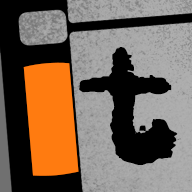hi all im new to cinematography as a uni student and was just reading about pratical lighting. what i wonderd was what other key words to describe lighting types like practical lights are there and what are there definitions? or if anyone had links to like a cinematography dictionary as such. thanks for the help in advance tom.
-
 ✅ Technical and creative solutions for your film.
✅ Technical and creative solutions for your film.
✅ Screenplay formatting help, plot and story guidance.
✅ A respectful community of professionals and newbies.
✅ Network with composers, editors, cast, crew, and more!
🎬 IndieTalk - Filmmaking and Screenwriting help site and community.
By filmmakers, for filmmakers since 2003
You are using an out of date browser. It may not display this or other websites correctly.
You should upgrade or use an alternative browser.
You should upgrade or use an alternative browser.
lighting lighting techno talk
- Thread starter tomclapson
- Start date
Practical lights are simply lights that are seen on camera that can provide light on your subject or just visible in the frame. An example would be a table lamp. You can call it practical lighting if you just use the existing light available (also called "available light"). There's also "natural" lighting, which is typically used when just using the sun as your primary light source (like having an actor standing at a window with sunlight lighting them up).
Try the books "The 5 C's of Cinematography" and "Painting with Light". They detail all the basics.
Here are some basic terms that you can research online too:
1.) High-key / low-key lighting (basic styles for lighting a scene)
2.) Key light
3.) Fill light
4.) Back light (also can be called a hair light)
5.) Kicker
6.) Spot / point / area lights (basic kinds of light sources)
There are tons of things to learn, so it's best to read a few books and then try lighting an object or person and then shoot it with just a still camera to first to learn the basics. Play around with "diffusion" material and see how it affects the shadows. Then try shaping the light with things like "flags" or "snoots" to get the light to go where you want. It's an art that requires a lot of practice.
Good luck!
Try the books "The 5 C's of Cinematography" and "Painting with Light". They detail all the basics.
Here are some basic terms that you can research online too:
1.) High-key / low-key lighting (basic styles for lighting a scene)
2.) Key light
3.) Fill light
4.) Back light (also can be called a hair light)
5.) Kicker
6.) Spot / point / area lights (basic kinds of light sources)
There are tons of things to learn, so it's best to read a few books and then try lighting an object or person and then shoot it with just a still camera to first to learn the basics. Play around with "diffusion" material and see how it affects the shadows. Then try shaping the light with things like "flags" or "snoots" to get the light to go where you want. It's an art that requires a lot of practice.
Good luck!
catch light - makes a subject not to look like a demon/satan, and have little light reflected in their eyes. Used heavily in photography, close relative of filmmaking 
besides.. no need to learn all this stuff.. just yell at your gaffer "Hey!!! Make my sh*t look nice!"

besides.. no need to learn all this stuff.. just yell at your gaffer "Hey!!! Make my sh*t look nice!"
Last edited:
oh that was sexy little book.. print!

